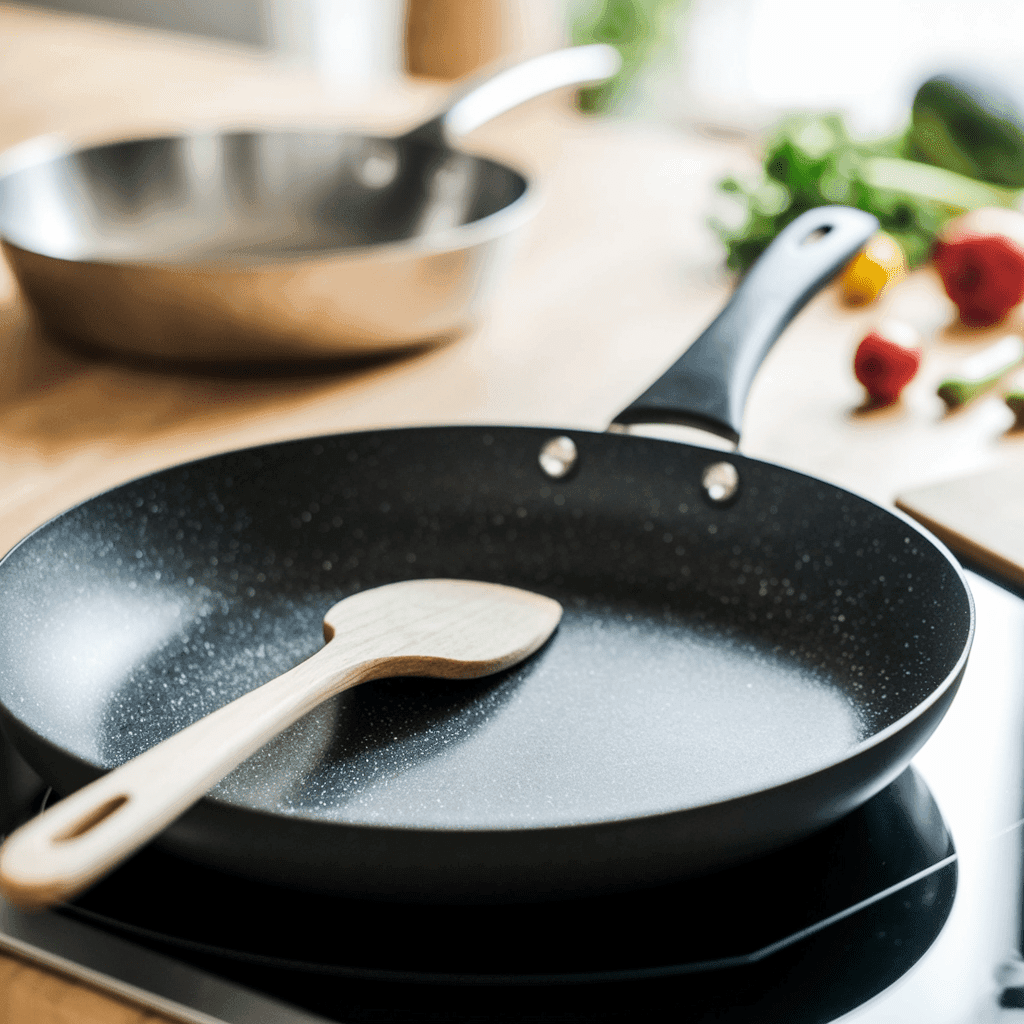We independently research and gather customer feedback on everything we recommend. When you buy through our links, we may earn a commission, at no cost to you. Learn more >
Introduction
Non-stick pans have become a staple in kitchens worldwide due to their convenience, ease of use, and minimal oil requirements. However, concerns about chemical coatings, potential health risks, and environmental impact have made many consumers question their safety. If you’re wondering whether non-stick pans are safe and what alternatives exist, this guide will help you make an informed decision before your next cookware purchase.
Understanding Non-Stick Coatings
The non-stick surface on cookware is typically made from one of the following materials:
- Polytetrafluoroethylene (PTFE/Teflon®): A synthetic fluoropolymer known for its slick surface, making cooking and cleaning easier.
- PFOA (Perfluorooctanoic Acid): Previously used in the production of Teflon, but phased out due to health concerns.
- Ceramic Coating: A newer, PFOA- and PTFE-free alternative made from silica-based material.
- Superhydrophobic Coatings: Some brands use silicone or titanium-infused coatings as an alternative to Teflon.
Each coating has its advantages and risks, which we’ll explore in detail.
Are Non-Stick Pans Safe?
The safety of non-stick pans depends on the materials used and how they are maintained. Let’s break down key safety concerns:
PTFE & Overheating Risks
- PTFE-coated pans are safe when used at low to medium heat.
- At 500°F (260°C) or higher, PTFE begins to break down, releasing fumes that may cause polymer fume fever (also known as Teflon flu).
- Overheating can lead to long-term degradation, making the pan unsafe over time.
PFOA and Its Health Risks
- PFOA was used in the manufacturing of Teflon until 2013 when it was banned due to links to cancer, hormone disruption, and other health issues.
- Modern Teflon-coated pans are PFOA-free, but some concerns remain regarding chemical substitutes (GenX) used in newer formulations.
Ceramic Coating – A Safer Alternative?
- Ceramic-coated pans do not contain PTFE or PFOA, making them a popular non-toxic choice.
- However, ceramic coatings can wear down faster than PTFE, reducing their non-stick performance over time.
- Some lower-quality ceramic pans may contain lead or cadmium in the glaze, so choosing certified brands is crucial.
Other Potential Health & Environmental Risks
- Scratched or damaged non-stick pans may leach microparticles into food.
- Some non-stick coatings are not biodegradable, contributing to environmental waste.
- PTFE-based cookware is not recyclable in traditional recycling systems.
How to Choose a Safe Non-Stick Pan
If you want a non-stick pan but are concerned about safety, here’s what to look for:
✅ PFOA-Free Certification: Ensure the pan is labeled 100% PFOA-free.
✅ High-Quality Ceramic Coatings: Choose lead- and cadmium-free ceramic options.
✅ Reinforced Non-Toxic Coatings: Some brands use titanium or diamond-infused coatings for extra durability.
✅ Check for Safety Certifications: Look for FDA, LFGB, or GreenGuard certifications.
✅ Avoid Cheap Non-Stick Pans: Lower-quality brands may contain harmful additives in their coatings.
Best Practices for Safe Cooking with Non-Stick Pans
To maximize safety and longevity, follow these simple guidelines:
- Use Low to Medium Heat: Avoid overheating to prevent chemical breakdown.
- Use Silicone or Wooden Utensils: Metal spatulas can scratch coatings, releasing particles.
- Hand Wash Only: Avoid dishwashers, as harsh detergents can degrade the coating.
- Replace When Worn Out: If the non-stick surface is peeling, flaking, or scratched, discard the pan.
Eco-Friendly & Non-Toxic Alternatives to Non-Stick Pans
If you want a completely non-toxic and environmentally friendly option, consider these alternatives:
🥘 Cast Iron: Naturally non-stick when seasoned, durable, and lasts a lifetime.
🥘 Stainless Steel: Safe, great for searing but requires oil for non-stick performance.
🥘 Carbon Steel: Similar to cast iron but lighter; great for high-heat cooking.
🥘 Glass Cookware: Perfect for baking and chemical-free.
🥘 100% Ceramic Cookware: A fully non-toxic and PTFE/PFOA-free alternative.
Final Thoughts: Should You Buy a Non-Stick Pan?
- If convenience is your priority, look for PFOA-free, high-quality non-stick pans and follow best practices.
- For health-conscious and eco-friendly choices, cast iron, carbon steel, and stainless steel are better long-term investments.
- Always research brands and materials before purchasing to ensure safe, durable, and non-toxic cookware.
By making informed choices, you can protect your health and the environment while enjoying a hassle-free cooking experience.
